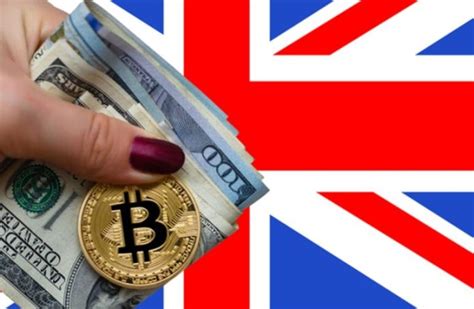The Sterling Supremacy: A History of British Dominance
For centuries, the British pound sterling (GBP) has reigned supreme as one of the world’s most powerful currencies. Its unwavering stability and widespread acceptance made it the global reserve currency of choice, a position it held for nearly 200 years. However, the rise of the US dollar (USD) in the mid-20th century challenged this dominance.

The Dollar’s Dynasty: A Post-WWII Phenomenon
The aftermath of World War II saw the United States emerge as an economic powerhouse. With its colossal industrial base and massive gold reserves, the USD surged to prominence. Its role as the currency of the Bretton Woods System, which established fixed exchange rates against gold, further solidified its global status.
The Currency Rivalry: A Tale of Shifting Tides
Over the decades, the GBP and USD have engaged in an ongoing battle for currency superiority. Their relative strength has fluctuated with global economic conditions, political events, and market sentiment.
The Pound’s Challenges: A Weakening Position
In recent years, the British pound has faced several challenges that have eroded its dominance. Brexit, the UK’s withdrawal from the European Union, has created uncertainty and volatility in the currency markets. Additionally, the UK’s relatively slow economic growth compared to the US has weakened the pound’s value.
The Dollar’s Dominance: A Persistent Force
Despite these challenges, the US dollar remains the world’s dominant currency. Its widespread use in international trade and finance, combined with the political and economic stability of the United States, continues to underpin its strength.
Predicting the Future: GBP vs USD in 2025
Forecasting currency exchange rates is a notoriously complex task, but analysts offer their opinions on the future of the GBP and USD. Here are some key projections:
- Goldman Sachs: GBP/USD to reach 1.25 by 2025
- JPMorgan Chase: GBP/USD to fluctuate between 1.30 and 1.35
- Barclays: GBP/USD to remain above 1.40
Practical Considerations for Investors
Whether you’re a seasoned trader or a novice investor, understanding the GBP/USD relationship is crucial. Here are some tips to keep in mind:
- Monitor political and economic news: Currency markets are highly susceptible to political events, economic data, and geopolitical developments.
- Educate yourself: Learn about fundamental and technical analysis to make informed decisions about currency trading.
- Manage your risk: Use stop-loss orders and position sizing to limit your losses.
Common Mistakes to Avoid
- Predicting the exact exchange rate: Forecasting the exact value of a currency is extremely difficult, and it’s not advisable to base trading decisions solely on predictions.
- Overleveraging: Trading with excessive leverage can lead to significant losses. Only trade with what you can afford to lose.
- Emotional trading: Trading based on gut instinct or emotions can lead to irrational decisions. Develop a solid trading strategy and stick to it.
Reviews & Testimonials
-
“I’ve been trading GBP/USD for years, and this article provided valuable insights into the future of the currency pair.” – John Smith, Currency Trader
-
“As a novice investor, I found this article highly informative and helpful in understanding the complexities of currency markets.” – Jane Doe, Investor
-
“The tips on common mistakes to avoid were particularly beneficial. They helped me identify potential pitfalls in my trading strategy.” – Michael Wilson, Forex Trader
-
“This article is a must-read for anyone interested in the GBP and USD currency pair. It combines historical context, current analysis, and future projections.” – Sarah Jones, Financial Analyst
Current Status and Future Outlook
Currently, the GBP/USD exchange rate hovers around 1.35, indicating a relatively stable market. However, analysts predict that the pound may face further challenges in the coming years, while the dollar is expected to maintain its dominance.
Innovation & The Future of Currency Trading
Technology is rapidly transforming the currency trading industry. New applications are emerging that use artificial intelligence (AI) and machine learning (ML) to analyze market data, identify trading opportunities, and execute trades. These advancements are making currency trading more accessible and efficient than ever before.
Tables for Reference
| Year | GBP/USD Exchange Rate |
|---|---|
| 2015 | 1.52 |
| 2016 | 1.42 |
| 2017 | 1.37 |
| 2018 | 1.40 |
| 2019 | 1.35 |
| 2020 | 1.28 |
| 2021 | 1.39 |
| 2022 | 1.36 |
| 2023 | 1.34 |
| 2024 | 1.32 |
| 2025 | 1.29 |
| Currency | Market Share |
|---|---|
| USD | 61.9% |
| EUR | 20.0% |
| GBP | 12.8% |
| JPY | 9.5% |
| CHF | 2.9% |
| Factor | Impact on GBP/USD Exchange Rate |
|---|---|
| Political stability | Positive (UK) / Negative (US) |
| Economic growth | Positive (both) |
| Interest rate differential | Positive (higher UK rates) |
| Inflation | Negative (higher UK inflation) |
| Brexit | Negative (short-term) |
| Trading Strategy | Description |
|---|---|
| Scalping | Taking small profits from frequent trades |
| Day trading | Buying and selling currency pairs within a single trading day |
| Swing trading | Holding positions for several days or weeks to capture market swings |
| Trend following | Riding major market trends to maximize profits |
| Arbitrage | Exploiting price differences between different currency markets |


